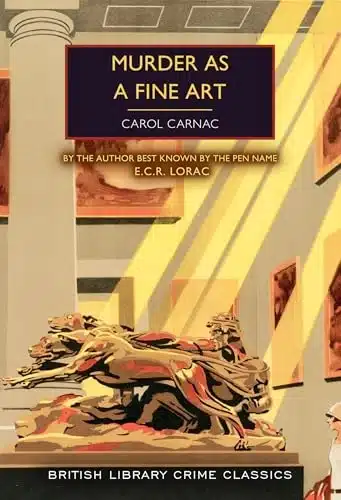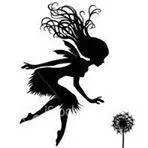Please scroll down for an English review.
במשרד לאמנויות יפות של לונדון שלאחר מלחמת העולם השנייה, הכול נראה מוקפד ומנומס. עד שפסל אחד נופל, תרתי משמע: פקיד בכיר נמצא מרוסק תחת ראש שיש עצום של גיבור לאומי. לכאורה תאונה. למעשה, תזכורת לכך שבעולם של אמנות ויופי גם רצח יכול להיות אסתטי.
מאחורי החידה האלגנטית הזאת עומדת אחת הסופרות הנשכחות של התקופה, אישה שידעה להפוך רצח למלאכת מחשבת.
קרול קרנק הוא שמה הבדוי של אדית קרוליין ריבט (Edith Caroline Rivett), מהסופרות הבולטות שפעלו בתור הזהב של ספרות המתח הבריטית, אותה תקופה שבה שלטו באיים הבריטיים שמות כמו אגתה כריסטי, דורתי ל. סיירס ונג’יו מארש.
ריבט כתבה עשרות ספרים תחת שני שמות עט: E.C.R. Lorac ו-Carol Carnac.
בעוד ספריה כ"לוראק" מתמקדים בבלש מקדונלד האנושי והמהורהר, ספריה כ"קרנק" נוטים להיות אינטלקטואליים וקרים יותר, עם מבנה לוגי הדוק ודגש על חידות ותבונה.
וזה אולי ההבדל העמוק בין קרנק לשאר בני דורה. היא מעולם לא חיפשה את הזעזוע, אלא את הצורה, את ההיגיון שמאחורי הפשע.
מתוך הסגנון המאופק והמדויק שלה, נולד גם Murder as a Fine Art; רומן בלשי אלגנטי וקר כזכוכית, שבו הפשע הוא לא רק נגד אדם אלא נגד אמת. מאחורי הקירות המעוטרים של בית מדיצ'י מסתתרים זיופים, עסקאות חשאיות, ותחושה הולכת וגוברת שהאמנות עצמה הפכה לכלי נשק.
הבלש ג’וליאן ריברס מסקוטלנד יארד מנהל את החקירה. הוא דמות של בלש יסודי, מדוד, כמעט ביורוקרט בעצמו. הוא חודר לעולם של פקידים שנראים כמו ציורים תלויים על קיר, וחושף שכבות של קנאה, יוהרה, ושקרים עטופי מסגרת מוזהבת.
Murder as a Fine Art הוא אחד הספרים הנדירים בז’אנר שמבינים באמת את הדמיון בין אמנות לפשע: שניהם דורשים דיוק, תכנון, והסתרה. הרוצח כאן יוצר מוות כמו אמן שמייצר אמנות, פסל מושלם של אלימות.
מה שמרתק אצל קרנק הוא דווקא השקט. היא לא בונה דרמה קולנית, אלא נותנת לקוראים להרגיש את המשקל: של השיש, של השתיקה, של מוסדות שבהם הכול נמדד על פי חזות ולא על פי כוונה.
זהו סיפור על זיוף, אבל גם על יופי מזויף. על חברה שמעדיפה מראה נקי על פני אמת מלוכלכת. קרנק לא שואלת “מי רצח?”, אלא “מה אנחנו מוכנים לזייף כדי לשמור על סדר העולם כפי שאנחנו מכירים אותו.”
Murder as a Fine Art הוא לא ספר שמזיע מרוב מתח, אלא ספר שנושם באיפוק. כמו פסל שיש, קר ויפהפה עד שמבינים כמה דם דרוש כדי לשמור עליו לבן. באיזשהו אופן, זה מה שהופך את הספר הזה לאמנות אמיתית.
Murder as a Fine Art / Carol Carnac
Kindle Edition, 1953, 244 Pp
דירוג SIVI –
איכות אודיו –

British Library Crime Classic #1
In London’s post–World War II Ministry of Fine Arts, everything appears orderly and proper until one sculpture falls, quite literally. A senior official is found crushed beneath a massive marble bust of a national hero. Seemingly an accident, it is in fact a reminder that in a world of beauty and art, even murder can be aesthetic.
Behind this elegant puzzle stands one of the forgotten voices of the Golden Age of British crime fiction — a woman who turned murder into a work of craftsmanship.
Carol Carnac was the pen name of Edith Caroline Rivett (E.C.R. Lorac), one of the most prolific and skilled writers of that era, when names like Agatha Christie, Dorothy L. Sayers, and Ngaio Marsh ruled the British Isles. Rivett wrote dozens of mysteries under her two pseudonyms, E.C.R. Lorac and Carol Carnac.
While her “Lorac” novels center on the humane and introspective Inspector Macdonald, the “Carnac” books are sharper, more intellectual, tightly structured stories that favor logic and restraint over sentiment.
That’s what makes Carnac so distinct from her contemporaries: she wasn’t chasing shock, but structured the calm geometry behind the crime.
From her measured, meticulous prose emerges Murder as a Fine Art, a detective novel as cold and elegant as glass. The crime at its center is not merely against a man, but against truth itself. Behind the ornate walls of Medici House hide forgeries, secret dealings, and the growing sense that art has become a weapon.
Inspector Julian Rivers of Scotland Yard leads the investigation. He’s a methodical man, nearly a bureaucrat himself, moving through a gallery of civil servants who look like paintings hung in their own offices. Beneath their politeness lie envy, vanity, and deceit, all perfectly framed.
Murder as a Fine Art is one of the rare mysteries that genuinely understands the kinship between art and crime: both demand precision, planning, and concealment. Its murderer kills as an artist sculpts, shaping death into a masterpiece.
What’s most compelling in Carnac’s work is the quiet. She doesn’t shout her drama; she lets the reader feel the weight of marble, of silence, of institutions that prize appearance over intent.
This is a story about forgery, and about beauty itself as a form of forgery, about a society that prefers a polished lie to an unvarnished truth.
Carnac doesn’t ask “Who killed?” but rather, “What are we willing to fake to keep the world looking tidy?”
Murder as a Fine Art doesn’t sweat with suspense; it breathes in restraint. Like a marble statue, cold, immaculate, and only later do we realize how much blood it takes to keep it white.
לגלות עוד מהאתר Sivi's Books
Subscribe to get the latest posts sent to your email.

